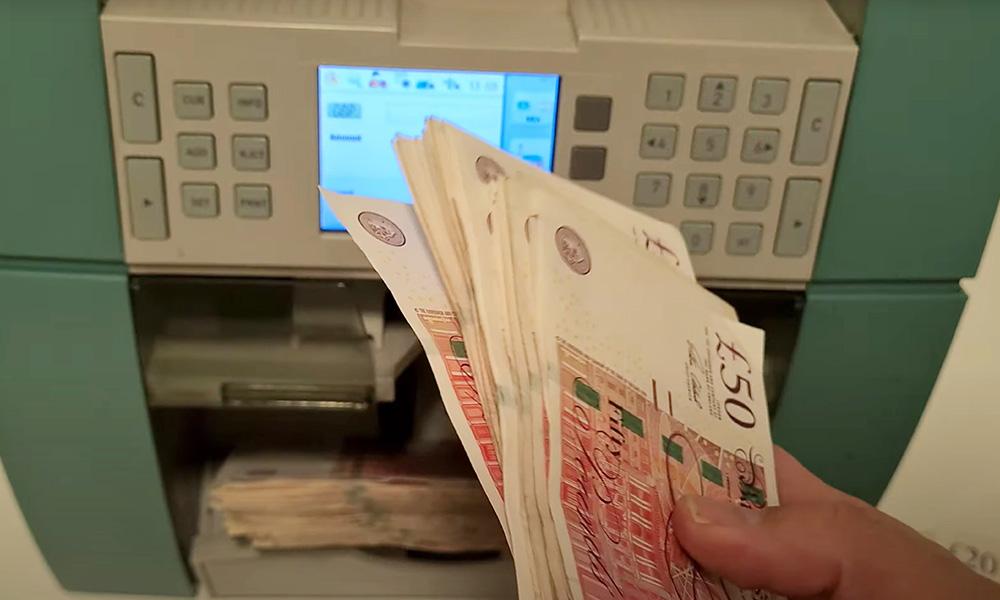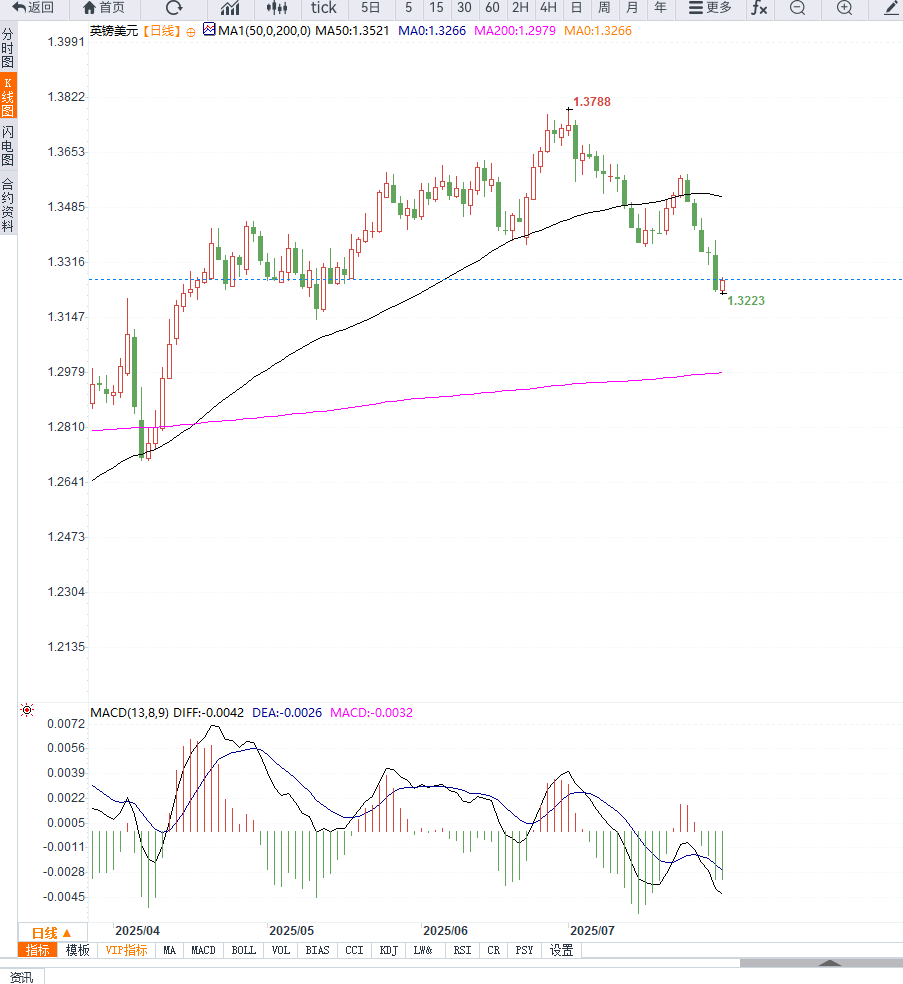The Fed's hawkish signals suppressed the pound's rebound momentum. The short-term rebound of GBP/USD was limited below the 1.33 mark, facing the expectation of an August interest rate cut in the UK.
2025-07-31 13:56:19
The US dollar briefly rose to a two-month high following the Federal Reserve's July meeting and is currently consolidating. Despite this, the potential for a significant correction remains limited. In his post-meeting statement, Fed Chairman Powell explicitly stated that "there is no preference for a rate cut at the September meeting," and noted that further observation of economic data is needed to determine inflation trends.
Meanwhile, US economic data showed strong signs of recovery. ADP data showed private payrolls increased by 104,000 in July, reversing a decline of 23,000 in the previous month. Second-quarter GDP growth reached an annualized 3.0%, significantly higher than the -0.5% growth in the first quarter, highlighting strong domestic demand and resilient consumption.

"Strong U.S. macroeconomic data and the Federal Reserve's continued hawkish stance have kept the dollar strong, making the rebound in sterling against the dollar lack sustainability," said Derek Halpenny, an analyst at City Index, a London market analysis firm.
Meanwhile, the outlook for the UK is even bleaker. The market generally expects the Bank of England to cut interest rates by 25 basis points at its August 7 meeting to counter the economic slowdown and falling core inflation. Recent data such as the UK's manufacturing PMI and retail sales suggest a continued cooling of economic activity.
"The market has almost fully priced in expectations of a Bank of England rate cut. The pound has been weakened by its fundamentals, and even if the dollar corrects in the short term, it will be difficult for it to rebound significantly," said Naoya Oshikubo, a foreign exchange market researcher in Tokyo.
From a technical perspective, GBP/USD has broken below the key 100-day moving average (currently around 1.3275) for the first time since mid-April, signaling a significant bearish move. The current short-term rebound remains constrained by the 1.3300 round-number mark and the 20-day moving average. A failure to break through 1.3320 could lead to a potential pullback.
Initial support below is at 1.3220. If it falls below, it will test 1.3180 and the May low of 1.3135. The RSI indicator is still in a weak area, and the momentum is biased towards the bears.
In addition, the US core PCE price index will be released tonight, which will be a key inflation indicator for the Federal Reserve. If the data is stronger than expected, it may further consolidate the strength of the US dollar and suppress the GBP/USD trend.

Editor's opinion:
The current rebound in GBP/USD lacks fundamental support. The US dollar benefits from strong economic data and the Federal Reserve's hawkish stance, while the pound faces the dual pressure of expectations of a UK interest rate cut and a weak economy.
In the short term, even if the US dollar undergoes a technical correction, it will be difficult for the British pound to establish a trend upward. Watch for a breakout above the 1.3300 resistance level, or a retest of previous lows amidst negative data. PCE data will be a key catalyst for determining short-term direction.
- Risk Warning and Disclaimer
- The market involves risk, and trading may not be suitable for all investors. This article is for reference only and does not constitute personal investment advice, nor does it take into account certain users’ specific investment objectives, financial situation, or other needs. Any investment decisions made based on this information are at your own risk.





















